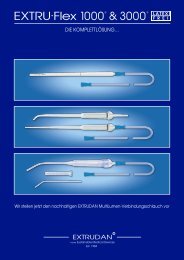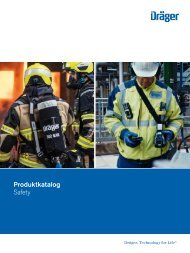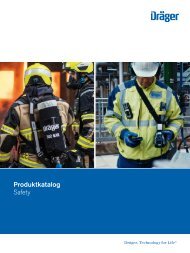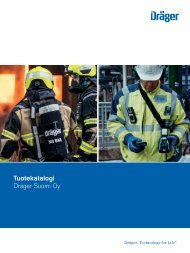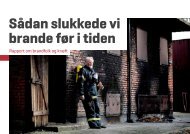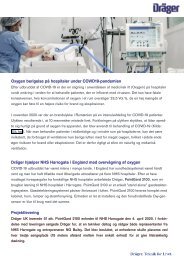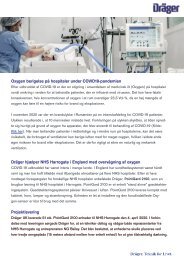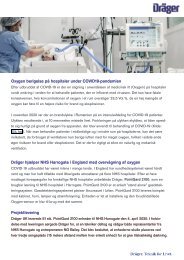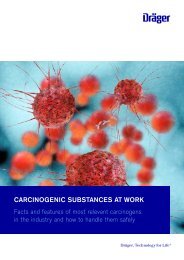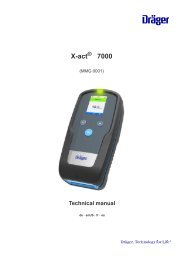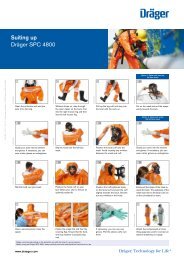Neonatal-Non-Invasive-Ventilation-NIV
Neonatal intensive care continues to be one of the most challenging fields in medicine. Fortunately years of experience from careful clinical observation, meticulous research and plenty of tender loving care have helped to significantly increase the chances of survival for our tiny patients. This booklet is an attempt to address the current development process of noninvasive ventilation therapies, both from a theoretical and a practical standpoint.
Neonatal intensive care continues to be one of the most challenging fields in medicine. Fortunately years of experience from careful clinical observation, meticulous research and plenty of tender loving care have helped to significantly increase the chances of survival for our tiny patients. This booklet is an attempt to address the current development process of noninvasive ventilation therapies, both from a theoretical and a practical standpoint.
Create successful ePaper yourself
Turn your PDF publications into a flip-book with our unique Google optimized e-Paper software.
I 7<br />
and hypercarbia is different to that of their term born counterparts, as they exhibit<br />
a noticeably irregular breathing pattern. This situation, compounded by decreased<br />
respiratory drive, can result in prolonged periods of apnea 64 . This combination of<br />
effects presents a significant challenge to successful pulmonary fluid clearance and<br />
alveolar aeration, thereby contributing to on-going respiratory compromise in preterm<br />
infants 33 .<br />
1.2.2. Feeding and growth<br />
The preterm infant has reduced glycogen stores at birth and is at risk for hypoglycaemia,<br />
necessitating almost immediate nutrition 53 . Despite significant intestinal immaturity,<br />
solid evidence suggests that enteral feeding should be commenced within the<br />
first hours of life. Human breast milk should be used as soon as available. However,<br />
the optimal feeding volume and increment intervals have yet to be established 20 . To<br />
ensure adequate substrate intake, intravenous parenteral nutrition will be necessary<br />
for many preterm infants during the first days of life.<br />
1.2.3. Immunity and infection<br />
The VLBW and ELBW preterm infants are highly susceptible to bacterial infections.<br />
The use of endotracheal ventilation tubes places them at risk for ventilator associated<br />
infections. Indwelling catheters and extensive skin lesions from repeated<br />
blood sampling and instrumentation further increase the risk of hospital-acquired<br />
infections. Antibiotic treatment is a mainstay of neonatal care; nevertheless, specific<br />
pathogen selection through antibiotic treatment place preterm infants at risk for specific<br />
infections, such as necrotising enterocolitis. Hence, judicious use of antibiotic<br />
treatment is mandatory and good antibiotic stewardship has become the widely accepted<br />
doctrine.<br />
1.2.4. Neuro-muscular and cognitive development<br />
The disruptive environment of neonatal intensive care units (NICUs) per se can<br />
result in poorer growth and impaired neurosensory development 17 . Compared to<br />
term-born infants, preterm infants are more likely to show poorer overall academic<br />
achievement, exhibiting specific challenges in mathematical abilities and social relationships,<br />
as well as impaired emotional and physical development 76 . In general,<br />
the rate of developmental delay increases as a function of decreasing gestational<br />
age 17 . Bassler and co-workers used severity of illness as a predictor of neonatal outcome<br />
and established that a count of three neonatal morbidities bronchopulmonary<br />
dysplasia (BPD), brain injury, and severe retinopathy of prematurity is a strong predictor<br />
for the risk of death or severe neurosensory impairment, particularly in EL-<br />
GANs 4 .




